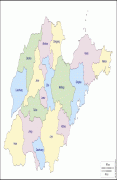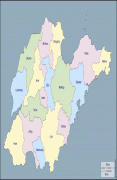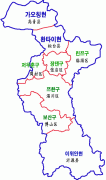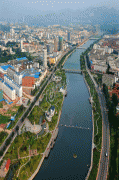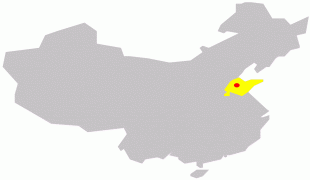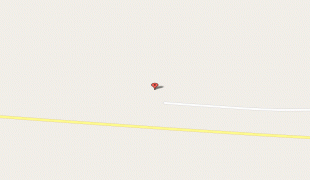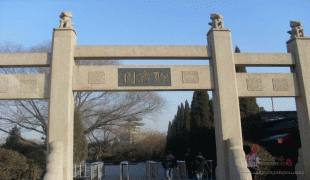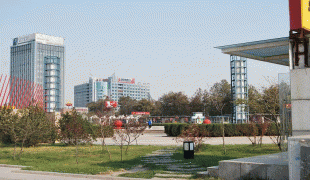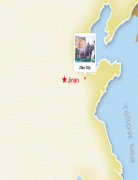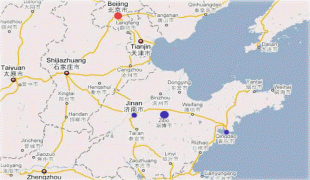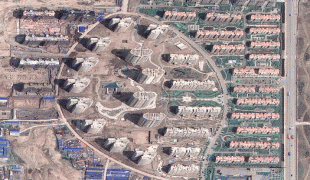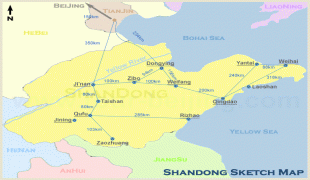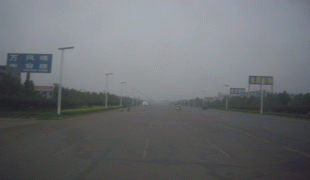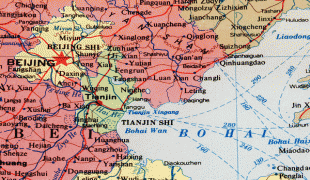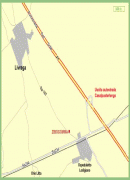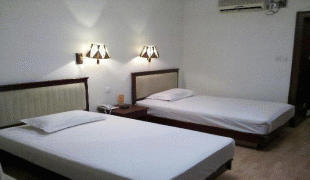Zibo
Zibo spans 5,938 km2. As of the 2010 cenus, Zibo's population was 4.53 million, of which 4.41 million lived in the metro area comprising five urban districts—Zhangdian, Zichuan, Boshan, Zhoucun and Linzi–and parts of neighboring counties Huantai, Gaoqing, and Yiyuan.
The Zibo area was the centre of the ancient State of Qi, whose capital Linzi was the most populous city in China at its peak. Pu Songling, a well-known writer of the Qing dynasty, is one of the most famous people from Zibo. As the birthplace of Qi culture, Zibo is a notable tourist city.
Manufacturing holds an important place of the city's economy, particularly ceramics manufacturing. Other key industries include the petrochemical industry, pharmaceuticals, metallurgy, construction materials, machinery and textiles. New industries and high-technology industries, such new materials, fine chemicals, electronics, IT, and biopharmaceutics are also developing rapidly.
According to the 2007-08 Global City Competitiveness Report released by the Chinese Academy of Social Sciences, Zibo was among the top 20 cities in the world in terms of fast economic growth between 2001 and 2005. According to the Oriental Outlook Magazine, Zibo ranks No. 1 on the list of cities that have reasonable real estate prices in China, also ranking No. 2 on the list of cities with good public security in China in 2008. In 2009, the city received the award of "Best 10 Harmonious Cities that enjoy Sustainable Development in China".
The remains of three major Neolithic cultures in ancient China, Beixin culture, Dawenkou culture, and Longshan culture have been found in Zibo. Ancient Linzi, located in present-day Zibo, was the capital of the ancient State of Qi, a powerful state during the Spring and Autumn and the Warring States periods, over 2,000 years ago. In 7th century BC, Duke Huan of Qi, ruler of Qi, appointed Guan Zhong, thinker and economist, as his prime minister, and adopted Guan's thoughts and policies to administer his country, develop the economy and develop relations with other states. The measures greatly strengthened the country, making its capital one of the most prosperous in ancient China. Zibo is rich in cultural and historical sites, and is referred to as the "Underground Museum". In Linzi, the ruins of the ancient Qi city, as well as other famous cultural relics and historic sites, have been discovered and unearthed. The ancient city of Qi was one of the first places in China that was assigned to be a "cultural relics site" and protected.
Zibo made significant contributions to the formation and prosperity of the Silk Road. Zibo was one of the biggest suppliers of silk products. Zhoucun, one of the townships in Zibo, was considered one of the four 'dry ports' alongside Foshan, Jingdezhen, and Zhuxian. The major trade streets such as 'Dajie', 'Sishijie', 'Yinzijie' are well preserved to this date.
In 2004, FIFA president Sepp Blatter visited Zibo to celebrate FIFA's 100th anniversary. FIFA has since then recognized the city as the birthplace of football.
Zibo City was established in 1954. The name came from a combination of the prefecture's two major urban areas, Zichuan and Boshan.
Map - Zibo
Map
Country - China
 |
 |
| Flag of China | |
Modern Chinese trace their origins to a cradle of civilization in the fertile basin of the Yellow River in the North China Plain. The semi-legendary Xia dynasty in the 21st century BCE and the well-attested Shang and Zhou dynasties developed a bureaucratic political system to serve hereditary monarchies, or dynasties. Chinese writing, Chinese classic literature, and the Hundred Schools of Thought emerged during this period and influenced China and its neighbors for centuries to come. In the third century BCE, Qin's wars of unification created the first Chinese empire, the short-lived Qin dynasty. The Qin was followed by the more stable Han dynasty (206 BCE–220 CE), which established a model for nearly two millennia in which the Chinese empire was one of the world's foremost economic powers. The empire expanded, fractured, and reunified; was conquered and reestablished; absorbed foreign religions and ideas; and made world-leading scientific advances, such as the Four Great Inventions: gunpowder, paper, the compass, and printing. After centuries of disunity following the fall of the Han, the Sui (581–618) and Tang (618–907) dynasties reunified the empire. The multi-ethnic Tang welcomed foreign trade and culture that came over the Silk Road and adapted Buddhism to Chinese needs. The early modern Song dynasty (960–1279) became increasingly urban and commercial. The civilian scholar-officials or literati used the examination system and the doctrines of Neo-Confucianism to replace the military aristocrats of earlier dynasties. The Mongol invasion established the Yuan dynasty in 1279, but the Ming dynasty (1368–1644) re-established Han Chinese control. The Manchu-led Qing dynasty nearly doubled the empire's territory and established a multi-ethnic state that was the basis of the modern Chinese nation, but suffered heavy losses to foreign imperialism in the 19th century.
Currency / Language
| ISO | Currency | Symbol | Significant figures |
|---|---|---|---|
| CNY | Renminbi | ¥ or 元 | 2 |
| ISO | Language |
|---|---|
| ZH | Chinese language |
| UG | Uighur language |
| ZA | Zhuang language |







